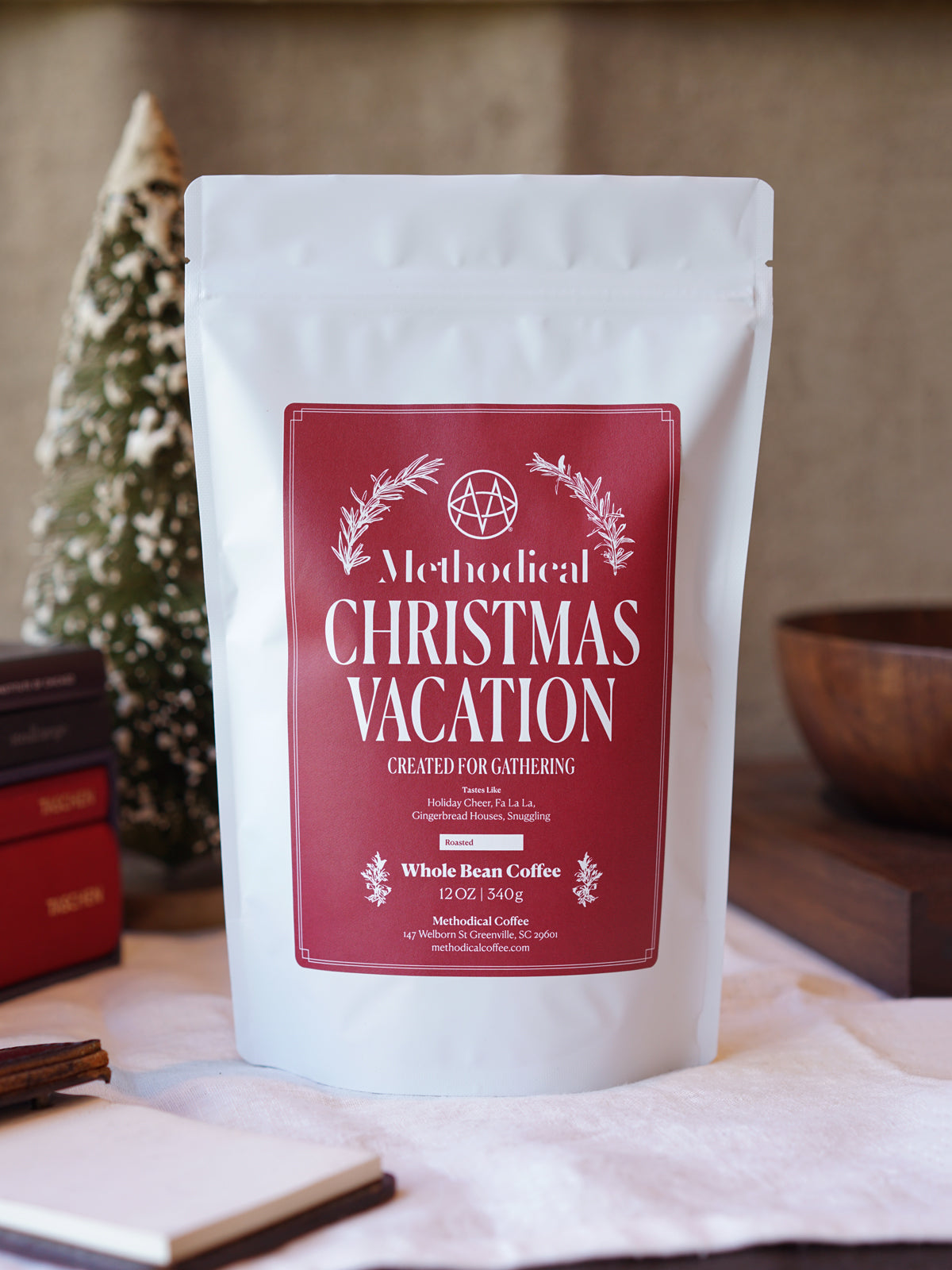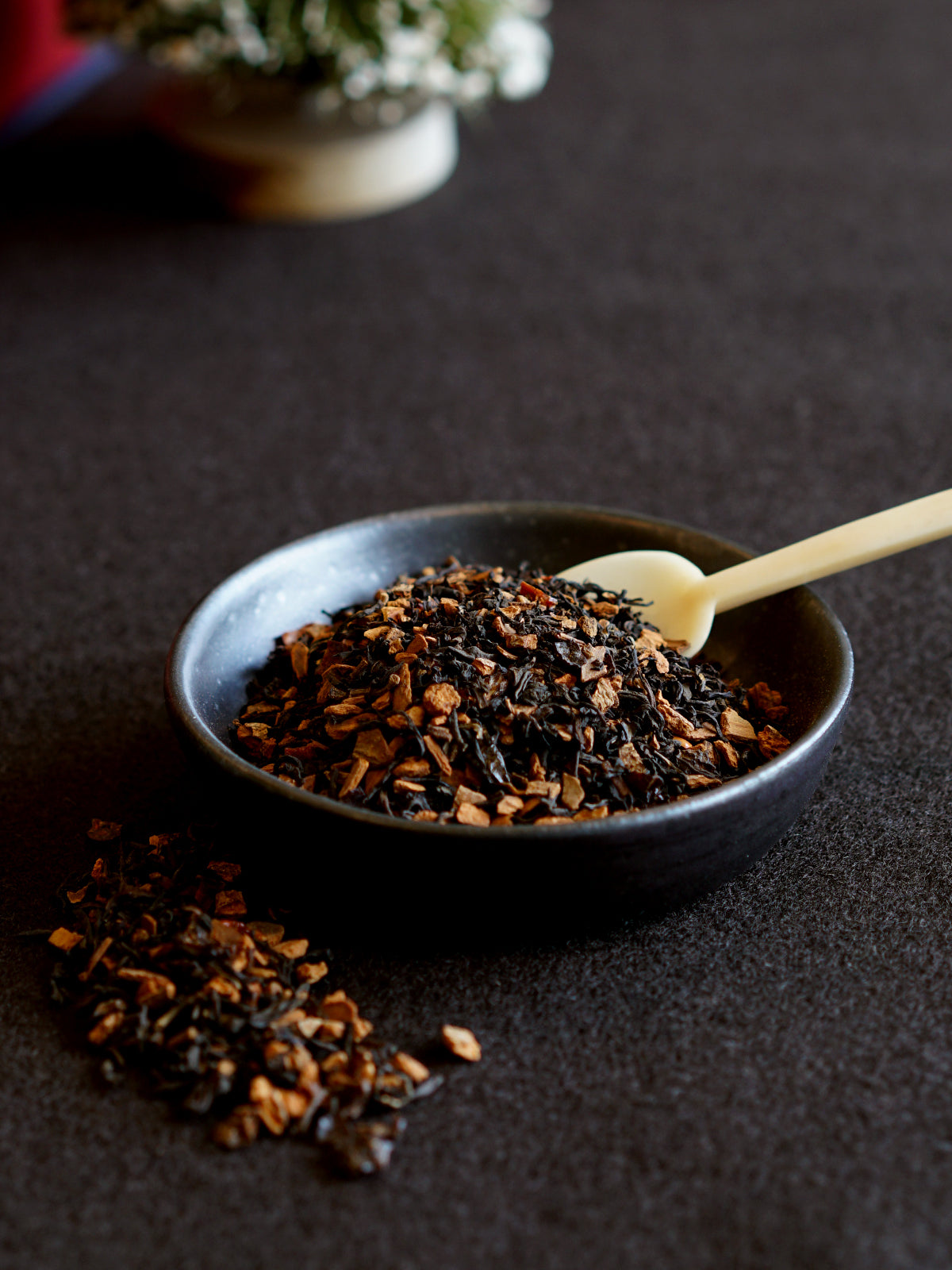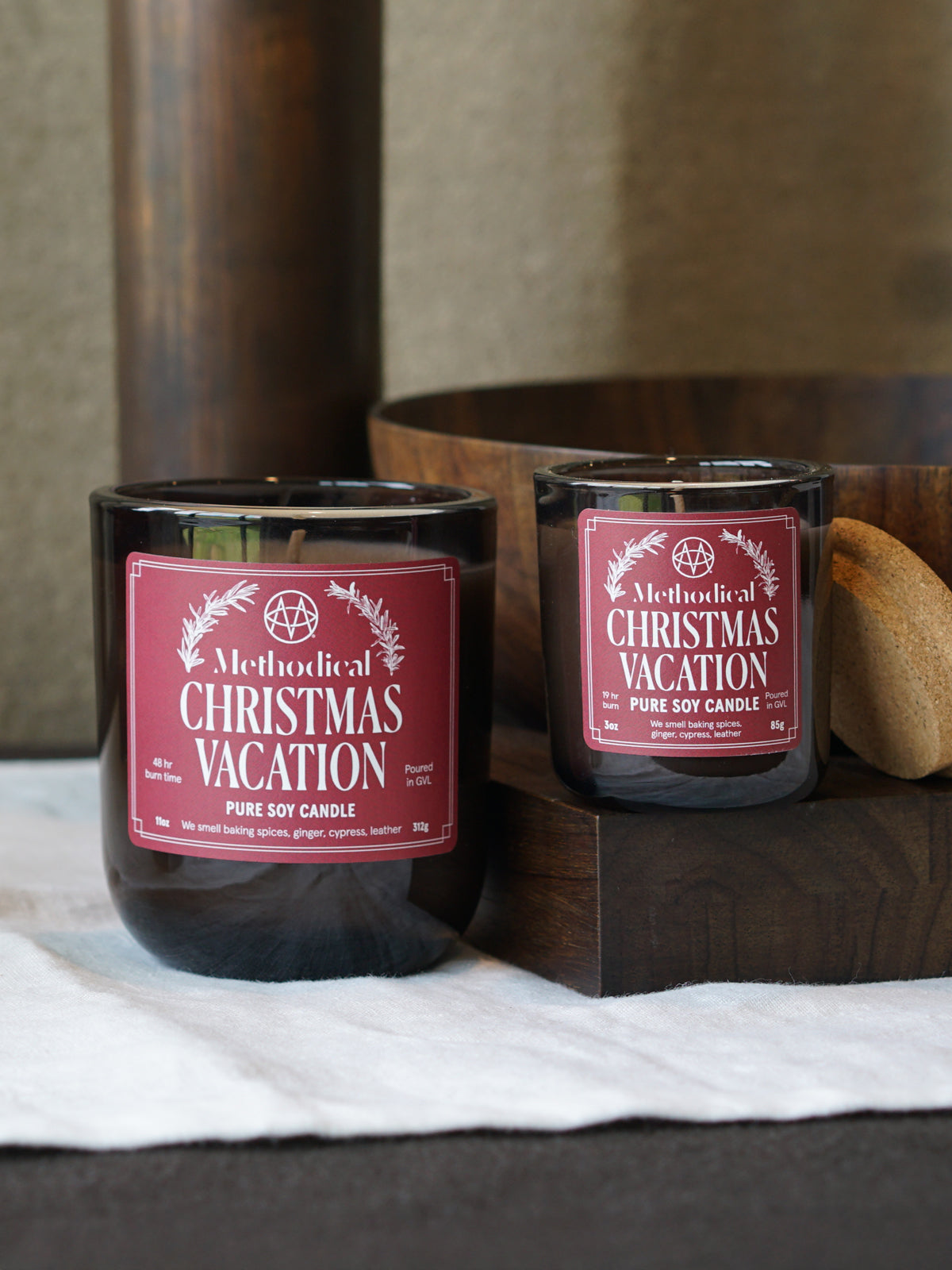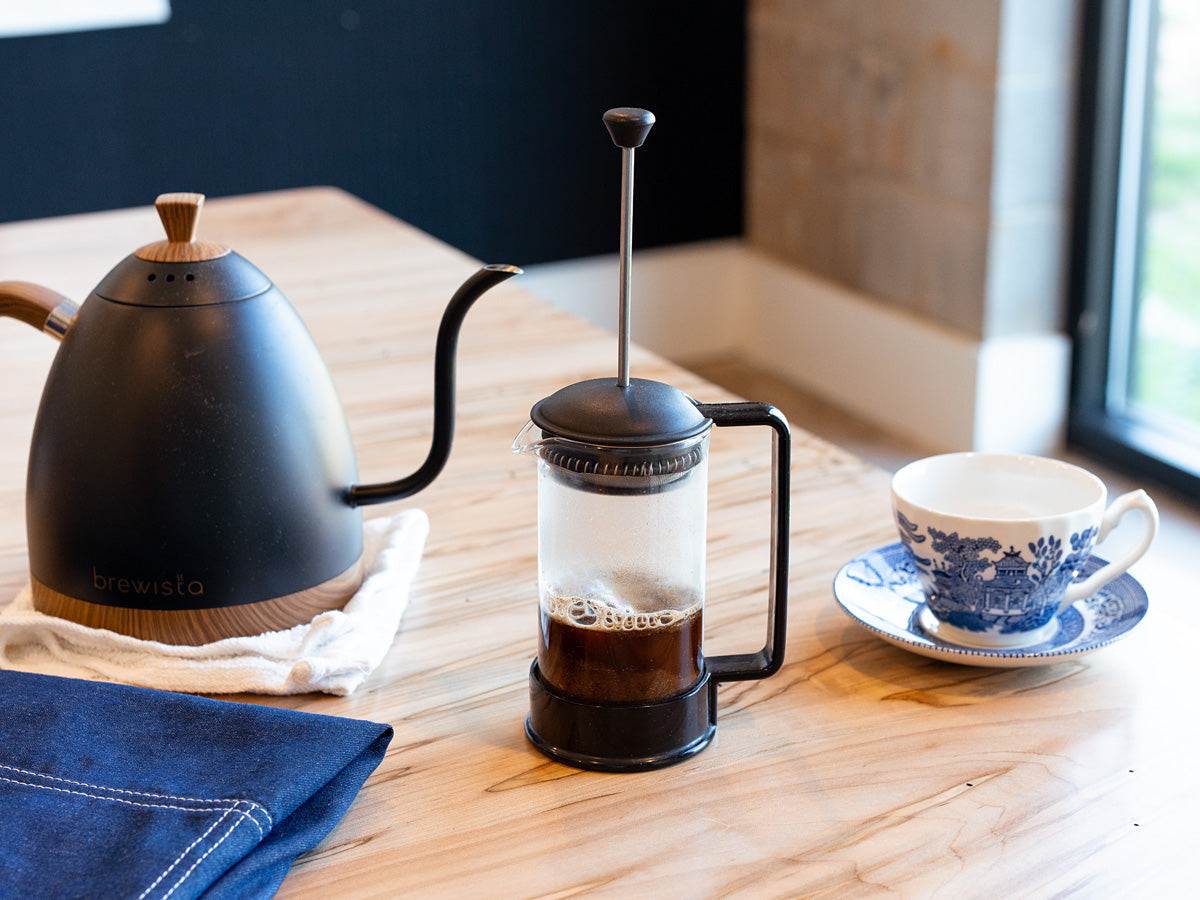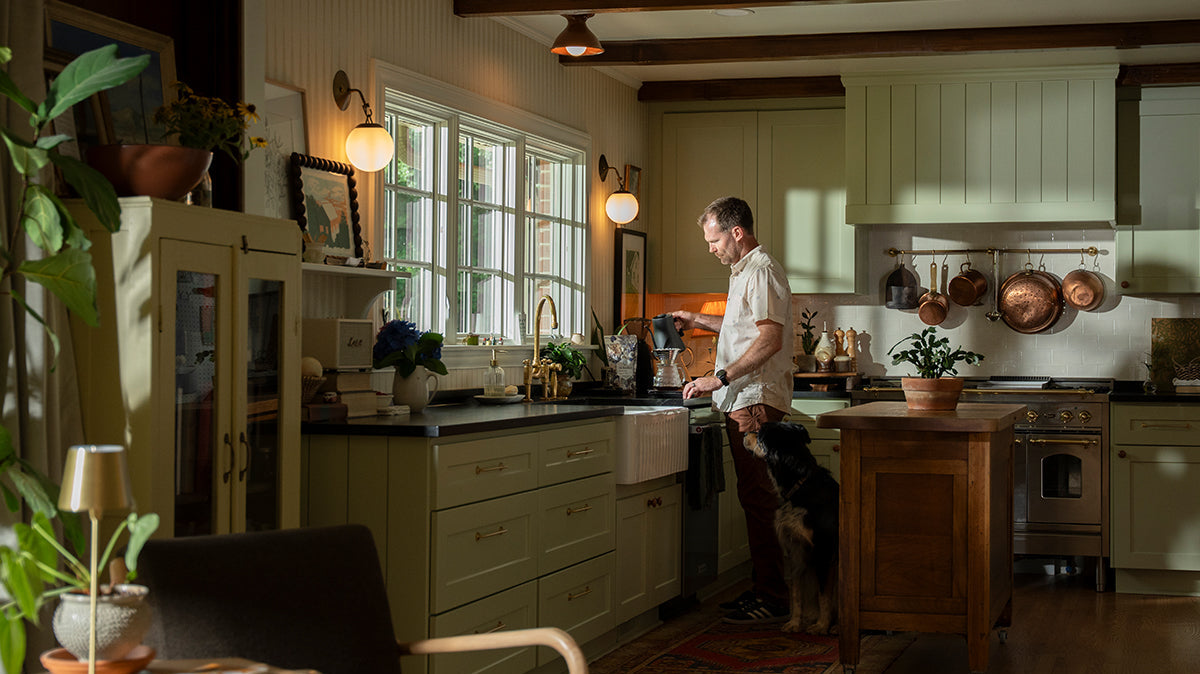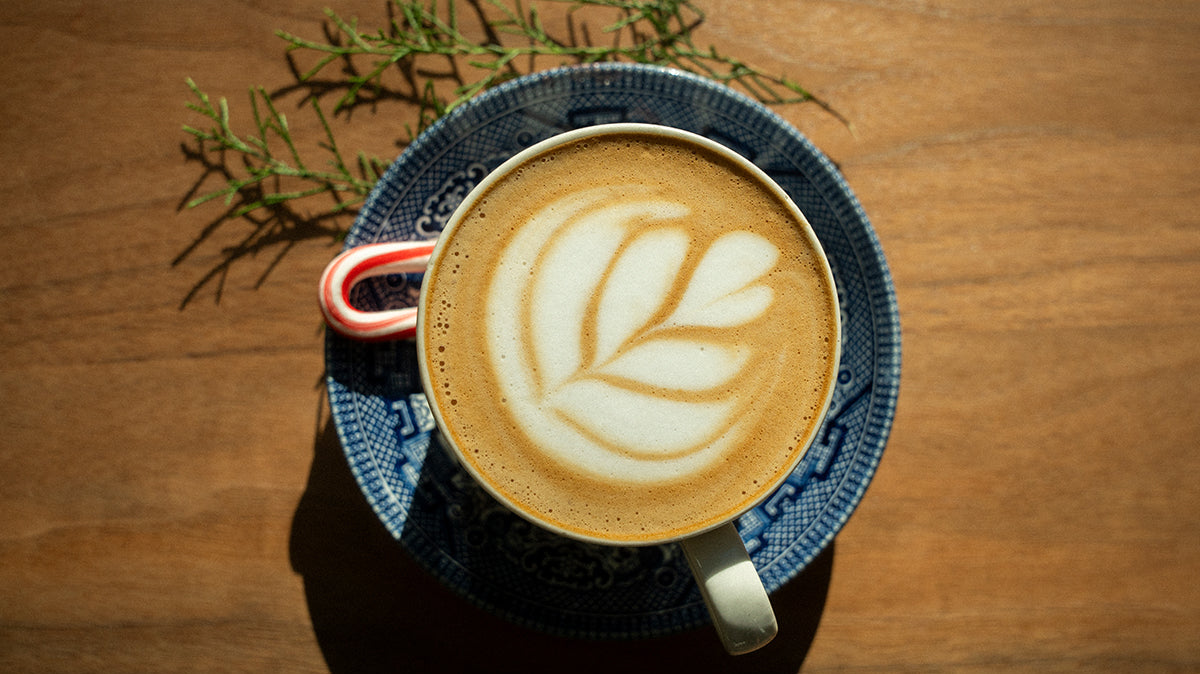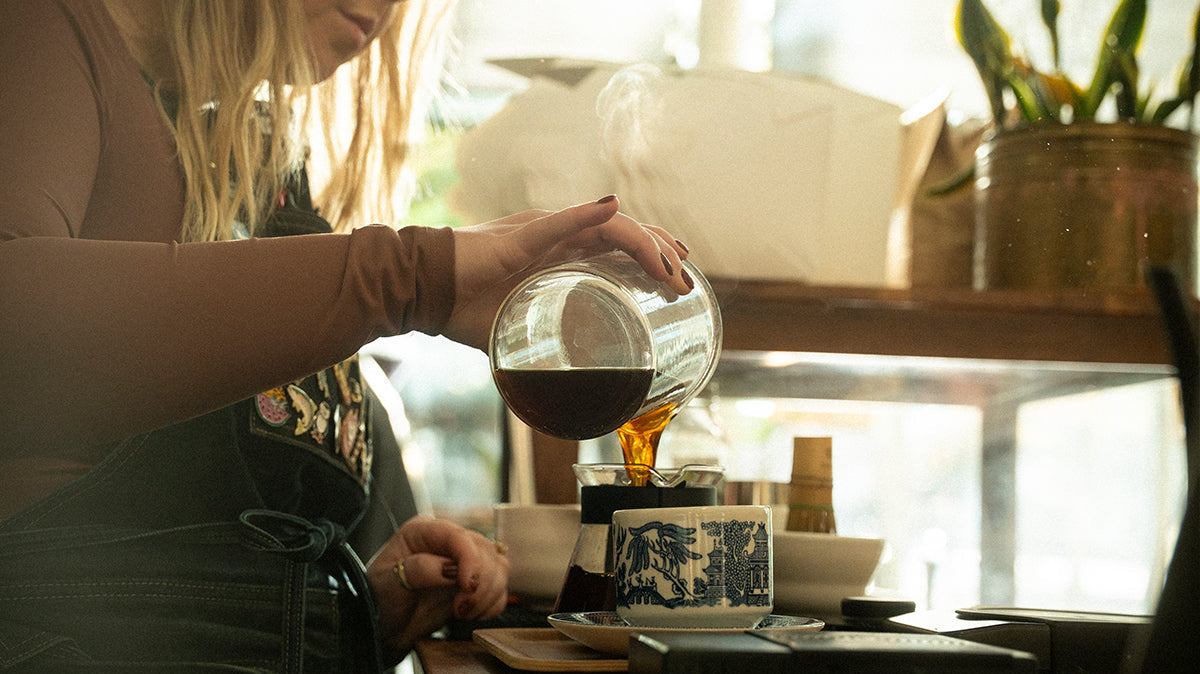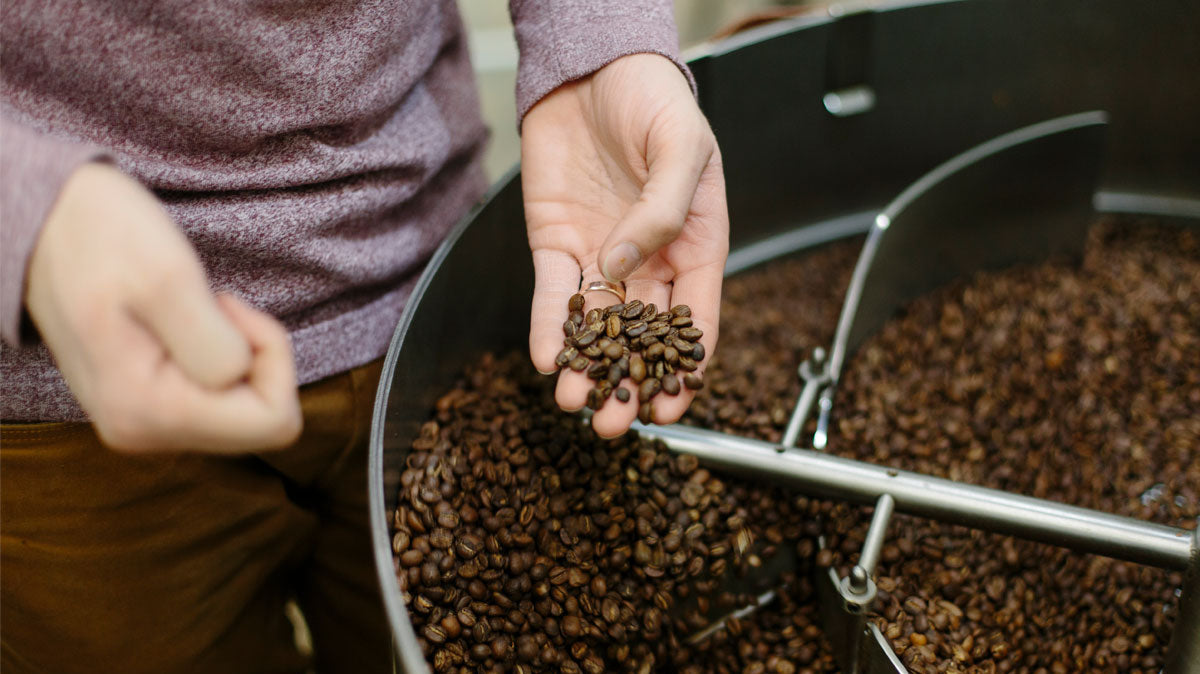Sometimes, a fresh shot of espresso is just what you need to start your day. This tiny but mighty serving of coffee packs a punch of flavor and caffeine, perfect to enjoy on its own or in a latte. If you’re an espresso lover but owning your own espresso machine just isn’t in the cards right now, there’s hope for you. You can make a deliciously comparable substitute for espresso with a French press, a much more accessible and affordable brewing method than an espresso machine. In this guide, we’ll teach you how to brew your own French press espresso to enjoy however you’d like, whether that’s first thing in the morning or in a tasty after-dinner cocktail.
What is French Press Espresso?
French press espresso is a bit of a misnomer. Traditional espresso is actually made using an espresso machine, which forces hot water through finely-ground coffee at high pressure, resulting in a concentrated and robust brew.
However, the term "French press espresso" refers to a strong and rich coffee made in a French press coffee maker. In a traditional French press, coarsely-ground coffee is steeped in hot water for several minutes before being pressed down with a plunger to separate the grounds from the liquid. Though French press espresso doesn’t quite have the intense flavor profile of true espresso made with an espresso machine, the resulting coffee is still flavorful and full-bodied. It’s often used as an espresso replacement in lattes, cappuccinos, and other drinks when no espresso machine is available.
Learn more: Espresso vs. French Press: What's the Difference?
What Do You Need to Make French Press Espresso?
Making espresso in a French press coffee maker is fairly simple, and you only need the same equipment and ingredients used to make a normal pot of French press coffee.
French Press Coffee Maker
Obviously, a French press coffee maker is essential when making French press espresso. It is a simple yet effective way to regularly make coffee at home which some coffee enthusiasts swear by. Keeping a French press on hand is a great idea whether you use it daily or occasionally to make French press espresso.
Look for your new favorite French press among our list of 7 Best French Press Coffee Makers in 2024.
Coffee Grinder
Evenly ground coffee is very important when making French press espresso, which is why a burr grinder is the best option. Burr grinders produce a consistent, uniform grind which helps brew flavorful and well-balanced coffee.
Finely Ground Coffee
Grind about 30 grams of coffee for your French press espresso. Use a fine grind, which is the opposite of what you normally use for a regular French press brew.
Learn more: How to Grind Coffee →
What type of coffee should you use? Contrary to popular belief, there’s no such thing as “espresso coffee beans.” Some coffee roasters create proprietary blends that they label as “espresso roast,” which are normally blends of full bodied, dark roast coffees. In reality, you can use any type of roast for your French press espresso, provided it is finely ground. We recommend using Belly Warmer or Blue Boy when making French press espresso.
Hot Water
You’ll need about 100 g of hot water for your French press espresso. A water to coffee ratio of 12:1 or 16:1 is typically for a traditional French press, but you’ll want to follow the 3:1 ratio (30g of coffee to 100g water) typically of espresso for this recipe.
Near-boiling water is typically used for French press espresso, just off the boil, around 200°F (93-95°C). Use either an electric or stovetop gooseneck kettle for the most efficient method; the slender gooseneck spout provides a steady pour that allows you to saturate all the grounds evenly.
Timer
Use a kitchen timer or your phone timer to keep track of the steeping time, usually around 4 minutes for maximum extraction. Any longer and the coffee will become over extracted, leading to a bitter flavor. Any shorter and the coffee won’t be strong enough to emulate the strength of espresso.
Scale
If you want precise measurements, a kitchen scale will help measure the coffee grounds and water accurately. Being accurate with your measurements can help you extract the perfect strength and flavor of your coffee.
How to Make Espresso in a French Press Coffee Maker
To make a strong and robust coffee similar to espresso using a French press coffee maker, you can follow these steps.
1. Measure and Grind the Coffee
Measure out and grind your coffee beans. Remember, you’ll need 30 grams of finely ground coffee. The texture of the coffee should resemble ground cinnamon.
2. Heat the Water
Bring your water to a boil and then let it rest for about 30 seconds to a minute to reach the optimal temperature, around 200°F (93-95°C). If you really want to dial in the flavor, consider trying filtered tap water or alkaline water when brewing French press espresso.
Learn more: Best Water for Coffee: Your Guide to the Perfect Cup →
3. Preheat the French Press
Pour a few ounces of the hot water into your French press to preheat it. Swirl the water around and then pour it out. This helps maintain the optimal temperature in the French press while the coffee is steeping.
4. Add the Coffee
Add the ground coffee into the preheated French press.
5. Pour & Stir
Pour the hot water over the coffee grounds, making sure all the grounds are evenly saturated. Use a spoon or stirrer to gently stir the coffee grounds and water together. Start your timer immediately for four minutes.
6. Steep
Place the lid on the French press with the plunger pulled all the way up. Let the coffee steep for about four minutes.
7. Plunge
After four minutes, slowly press down on the plunger to separate the grounds from the brewed coffee. Apply gentle pressure to avoid forcing grounds through the filter.
8. Serve
Pour the brewed coffee into your coffee cup immediately to prevent over-extraction.
9. Enjoy
You can enjoy the espresso by itself or you can steam some milk to create an espresso macchiato or other espresso-based beverage. Elevate the experience further with a biscotti, chocolate, or another delicious food and espresso pairing.
Other ways to enjoy espresso at home:
Espresso at Your Fingertips
Following these steps and best practices, you should be able to make a delicious substitute for espresso to enjoy at home. Remember to use fresh, high-quality coffee beans to get the best flavor possible–look no further than our selection of single-origin and blended coffees full of complexity, body, and balance.
You might also like:
